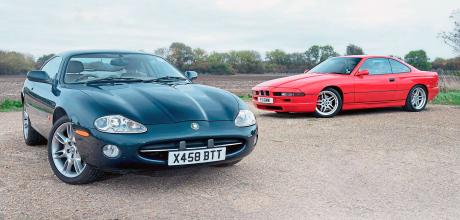1997 BMW 840Ci Auto 4.4 E31 vs. 1999 Jaguar XK8 Coupe 4.0 X100
Which of these two V8-engined coupes from the Nineties do we prefer; the traditional Jaguar XK8 X100 4.0 or the more contemporary BMW 840Ci E31?
WORDS & PHOTOGRAPHY PAUL WALTON
TWIN TEST Separated at birth
Jaguar vs BMW XK8 X100 meets 8-Series E31
Two different ways of creating a ’90s grand touring coupe: does the high-tech E31 8-Series or the personality-laden X100 XK8 get the vote?
Study the history and specifications of the Jaguar XK8 X100 and BMW 840Ci E31 and you’d think they were separated at birth. As two-door V8-engined coupes that arrived in the mid-Nineties and from companies that have a long history in sports cars, they have more than a little in common.
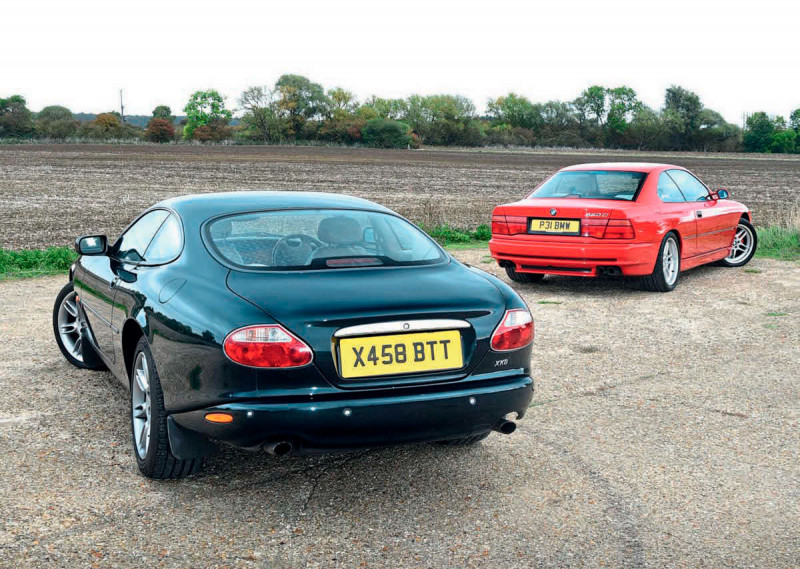
But raw data is one thing; actually driving the cars is another. To discover whether this pair of powerful grand tourers are as alike as the facts and figures suggest, we’re comparing a 2000 Jaguar XK8 X100 with a 1997 BMW 840Ci Auto E31.
1997 BMW 840Ci Auto 4.4 E31
Despite arguably looking and feeling more modern than the Jaguar, the BMW arrived first, debuting at the 1989 Frankfurt Motor Show before going on sale the following year. By being more powerful and more expensive, it wasn’t a direct replacement for the 6-Series E24 like the XK8 would be for the XJS six years later.
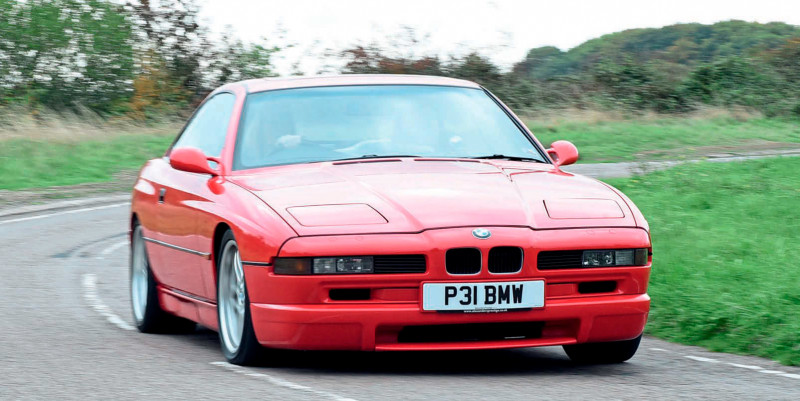
The idea of such a model was originally considered by BMW in 1981 with the green light for the car – internally known as the E31 – given three years later. The work of inhouse designer, Klaus Kapitza, it featured a muchmore angular and chiselled design than the softer 6-Series E24. Plus, by being based on the E32-generation of 7-Series, it was longer and wider than its predecessor. The press weren’t always impressed by the new look, though. “It’s an old-school, square cut BMW,” said Car magazine in its November 1996 issue, “elegant but too discreet to be exciting.”
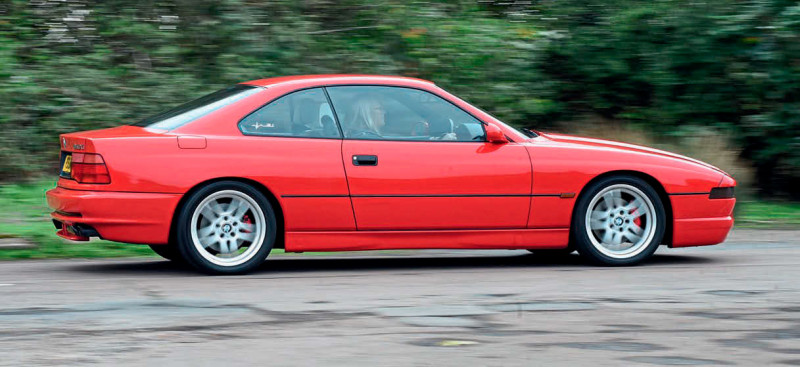
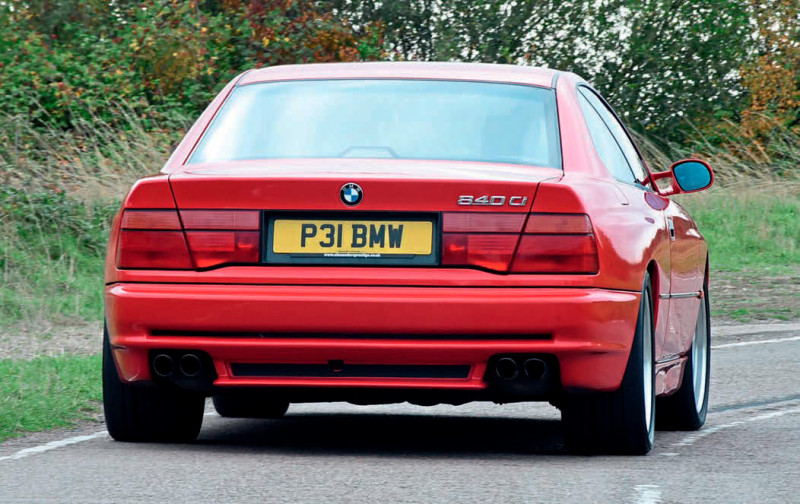
What really set the E31 apart from the 6-Series (as well as the competition) was the abundance of clever technology, much of it not seen before. This included an electronic drive-by-wire throttle, four wheel steer and intelligent automatic transmission. Little wonder BMW managed to spend a huge $900 million on the car’s development. Yet this eye-watering amount didn’t include a convertible version and other than a handful of expensive aftermarket conversions, the 8-Series E31 was only ever available as a coupe.
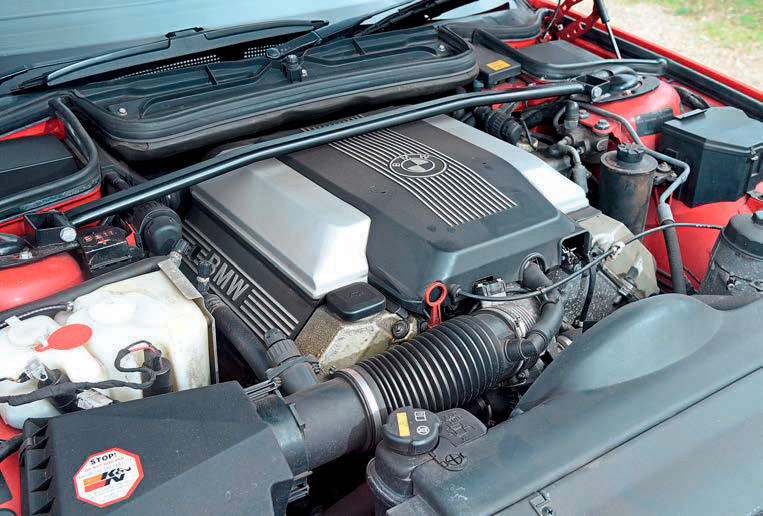
To begin with, the only engine choice was BMW’s first production V12, a 5.0-litre M70 that delivered 300bhp resulting in a 0-60mph time of seven seconds. This decadent engine together with all that tech made the 850i E31 an expensive choice. At £61,495 in 1992, it cost £13,500 more than its nearest V12-engined rival, the 6.0-litre XJR-S.
Yet the critics were never that impressed by the car, feeling like it lacked character. “You would always respect such countrycrossing abilities,” said Car magazine in its October 1992 issue, “but never fall passionately in love with it as a loyal and faithful servant. Somehow the BMW 850i E31 is a shade too nice, too pinkly soft, too twee: it tries a mite hard to be friendly and accommodating, offers heart but not soul.” A slightly more affordable option, a M60 4.0-litre V8, arrived in mid 1993 but at £52,950, was still £20k over the recently updated XJS 4.0. Two years later the capacity was increased to 4.4 litres M62B44 which didn’t change the power output of 286bhp but torque was increased from 295 to 310lb ft.
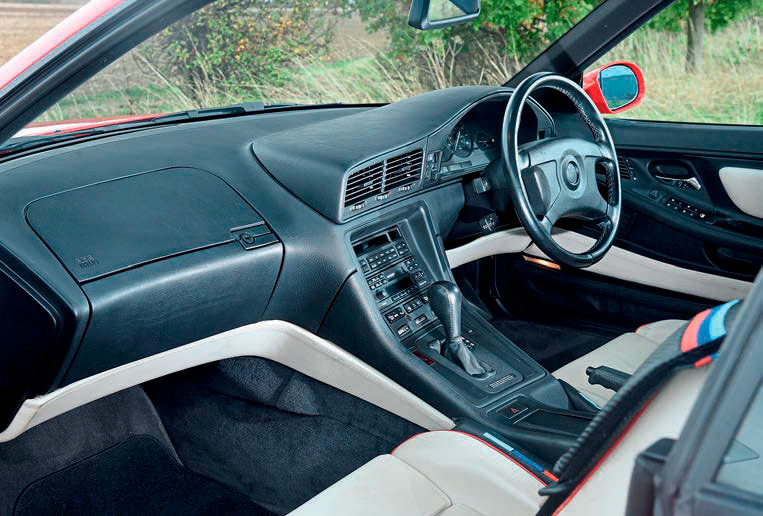
Often viewed as too big, too complicated and too expensive, the 8-Series E31 was never as popular as its huge investment warranted. Admittedly the global recession of the early Nineties hit sales hard, the all-important American market especially, but between 1990 and 1999 a mere 30,621 examples were produced. Of those, just 7803 were the V8-powered 840Ci E31 making the red 1997 example I’ve arranged to drive a real rarity and one I’m excited to experience.
Yet as much I as I appreciate the boldness of the design, it’s too square, too hard and too large for my own tastes, preferring the soft voluptuousness of the XK8.
Those themes continue inside. The E31 8-Series’ interior is dominated by a wide and hard-edged centre console that in typical BMW efficiency is slightly angled towards the driver. Made from a particular variety of strong yet soft to touch black plastic only found in German cars, the cabin’s ambience is more Braun travel alarm clock than luxury GT but it’s still strongly built, more so I’d argue than the often fragile-feeling Jaguar.
According to the official performance figures, at 6.7 seconds, the BMW is faster to 60mph than the XK8 X100 by a mere 0.1 of second yet as I squeeze the throttle, due to a fatter torque curve with a lower peak, it feels faster than that. A tiny handful of 840Cis E31 were fitted with a six-speed manual transmission while most, like this one, had a five-speed automatic. More eager to kick down than the Jaguar’s similar gearbox, it results in a punchier acceleration.

The suspension’s compliancy is more like that of a genuine sports car, such as BMW’s own Z3, resulting in a relatively hard, unforgiving ride. But since the 840Ci E31 weighs 1855kg – 200kg more than the XK8 coupe X100 – it’s also too big and too heavy plus suffers from an abundance of body roll to take corners at high speeds comfortably. Yet for its faults, the BMW is still a magnificent car; beautifully built and well-engineered, it feels stronger and better put together than the Jaguar. Is this enough to beat the still popular British GT?
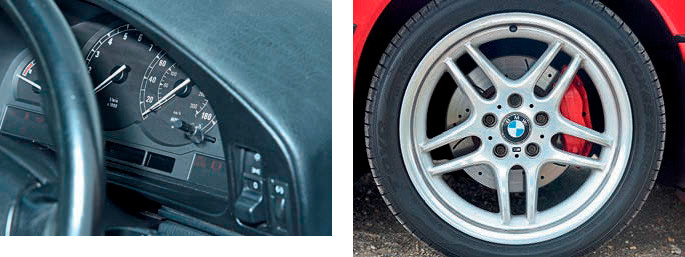
TEHNICAL DATA 1997 BMW 840Ci Auto 4.4 E31
- ENGINE AND TRANSMISSION: 4.4-litre V8 M62B44, K&N performance air filter, Magnaflow custom stainless steel quad exhaust system. Five-speed Steptronic gearbox ZF 5HP24
- MAX POWER 282 hp @ 5900rpm
- MAX TORQUE 420 N⋅m 310 lbf⋅ft @ 3900rpm
- CHASSIS: 9.5x19” (front) and 10.5x19” (rear) Rotiform LHR custom thee-piece forged wheels with polished stepped lips and bronze mesh centres, 245/30 (front) and 265/30 (rear) Michelin Pilot Sport 4 S tyres, Accuair E-Level+ air management system with height sensors, Air By Plush ABP custom-made air suspension kit, Brembo four-piston M Performance calipers painted purple with 332mm discs (front), Goodridge Performance zinc-plated braided brake lines
- 0-60mph 6.7secs
- Max speed 155mph
- Price new £56,850
- Value now £12,000-£25,000
1999 Jaguar XK8 Coupe 4.0 X100
The 8-Series E31 might have been larger and more expensive than the car it replaced but it was business as usual over at Browns Lane during the early Nineties when Jaguar was developing its own new car. A case of “if it ain’t broke, don’t fix it”, in terms of size, personality and price, the eventual XK8 was reminiscent of the outgoing XJS.
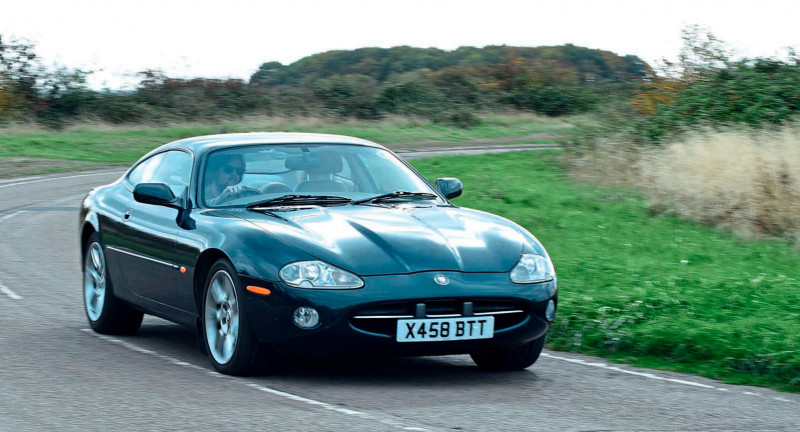
Yet it was also very different at the same time. Although it used a section of the older car’s chassis, the new model (codenamed X100) featured similar curves to those of the E-Type, a conscious decision by the company’s design team. “Internally, we had a very strong view that the XK8 X100 ought to be the spiritual offspring of the E-Type,” said the company’s design director, Geoff Lawson told Autocar in March 1996, “with muscular flowing shapes and a much sportier look than the XJS.”
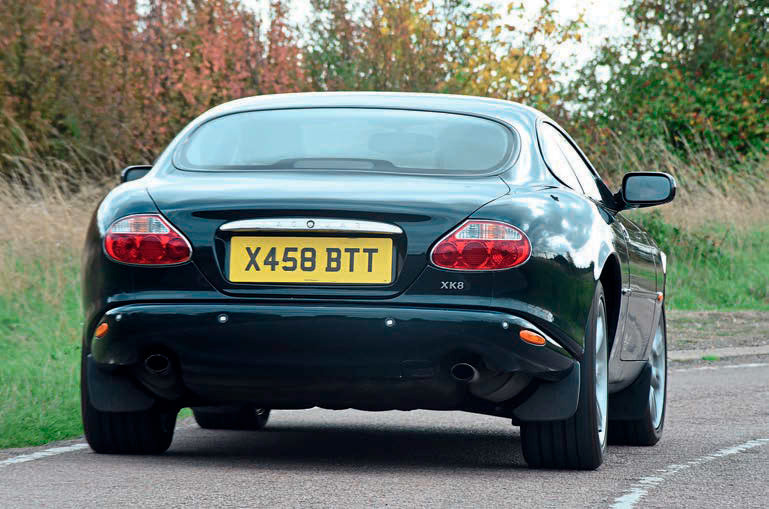
The result was a handsome, classically proportioned coupe and convertible that the critics loved from the outset. Autocar even described the XK8 as one of the prettiest sports cars Jaguar had ever built. Considering the quality of the company’s back catalogue, that was high praise indeed.
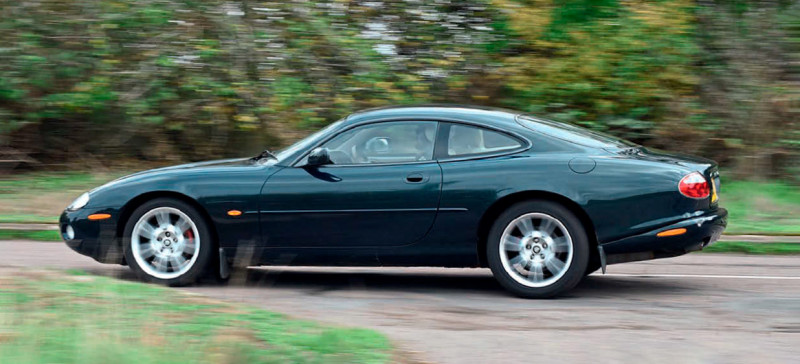
The design wasn’t the only aspect of the car that was new; under the bonnet was an all-aluminium, 32-valve, quad-cam 4.0-litre V8 that was the work of Jaguar’s engineers but built at Ford’s engine plant in Bridgend, South Wales. With 290bhp, it offered a 155mph top speed and sub seven second dash to 60mph. A ‘Spitfire wing’ shaped dashboard into which the dials were then inset might have been new, but the heavy use of veneer and leather made the interior’s atmosphere similar to that of the outgoing XJS. But then, that’s what customers of the time were expecting.

“We made clays,” said Geoff Lawson in the April 1996 issue of Car magazine, “a broad selection from radical to off the wall to much more restrained. The one we developed is very Jaguar. It focuses on ambience and natural materials.”
The luxurious interior, the classic design and excellent performance made the X100 XK8 an attractive combination especially following the car’s debut at the 1996 Geneva Motor Show. it was also incredible value at £48,000, eight grand under the 840Ci E31. As What Car? said in the December 1996 issue, “Nothing remotely similar in price comes close.” And over 25 years later, that’s still the case. As mentioned earlier, XK8s are today valued at between £3000 and £7000 which, for a beautiful, luxurious and big-engined GT, is difficult to comprehend.
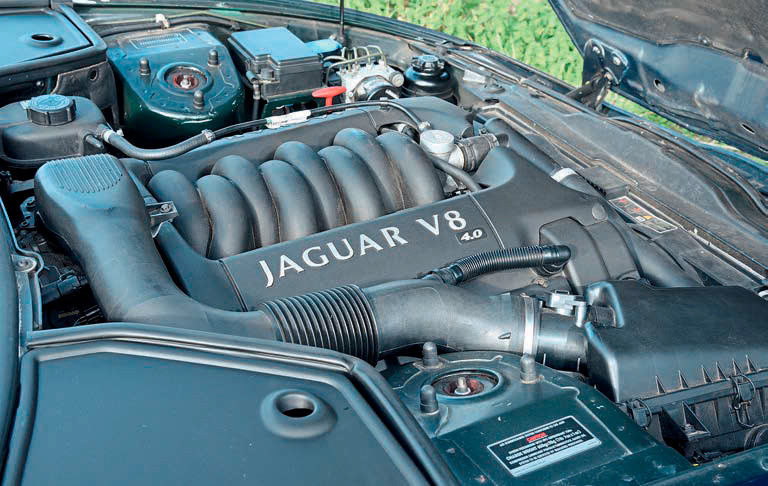
Admittedly with over 90,000 X100s of all variety produced between 1996 and 2005, they’re not as rare as the BMW, but who cares when they look this good?
Admission time: regular readers might have already recognised the 2000 Emerald Green coupe featured here as my own. But I promise I’m being impartial when I say I reckon it’s prettier than the BMW. It’s not as bulky and, ironically, the smoother, rounder, more traditional lines have aged better than the angular, more modern 8-Series.

As the worn leather on the driver’s seat bolster and the annoying squeak from behind the dash will testify, I admit the interior isn’t as well-built as the BMW’s. And if the E31 840Ci’s cabin is a travel alarm, the huge swathe of wood makes the Jaguar a grandfather clock. Yet I still find it friendlier, cosier and more user-friendly than the cold austerity of the German car.
The BMW M62 4.4-litre might have the edge in terms of grunt but always eager and free revving, when I give the throttle a proper shove the XK8 still accelerates with a surprising hardness. And as the speed rises, a surprisingly meaty growl starts to grow in the cabin. The XK8’s power-assisted rack-and-pinion steering is reasonably precise for a big GT, although too light and imprecise for a serious B-road blast. The car might not have Jaguar’s optional active suspension system (CATS) fitted but there’s still plenty of grip if a little too much body roll. Although 200kg lighter than the BMW, the car’s still considerable weight and slow steering doesn’t allow for a full exploration of its performance since it lacks the sharp directness of its more driver-focused, all aluminium replacement.
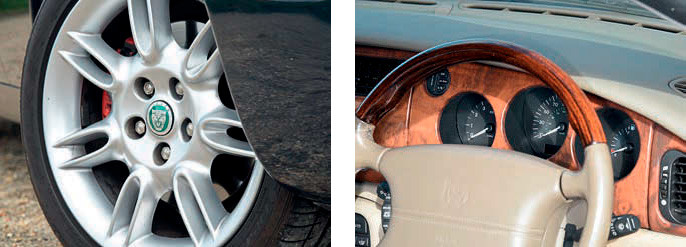
Plus, unlike the sportier 840Ci E31, the Jaguar has no illusions it’s anything other than a comfortable grand tourer. And so the suspension is beautifully supple, smoothly soaking up any bumps in the same easy style as an XJ from the same era. Yet after driving both back-to-back, there’s something about the Jaguar that’s bothering me. Admittedly I’ve owned the X100 XK8 for several years, but I can’t help feeling it lacks the sense of occasion of the larger, better-built and rarer BMW. So considering all of this, which one of these two magnificent coupes should you choose today?
TEHNICAL DATA 2000 Jaguar XK8 4.0 X100
- Engine 3,995cc V8 32 valve
- Max Power 290bhp
- Max Torque 290lb ft
- TRANSMISSION 5-spd automatic
- 0-60mph 6.8secs
- Max speed 155mph
- Transmission 5-spd auto
- Price new £50,995
- Value now £3,000-£7,000
Verdict
As mentioned earlier, I think the BMW is a great car; clever, well-engineered and powerful, I genuinely enjoyed my brief time behind the wheel. Plus, compared to the more common XK8, the car’s relative rarity is appealing too.
But in my opinion the 840Ci can’t compete with the Jaguar in terms of design and handling. Admittedly looks are subjective and I’m sure BMW enthusiasts will disagree with me, but I’m not the only one who reckons the X100 rides better. As Motor Sport magazine surmised at the end of a similar comparison in 1996, “The XK8 not only out-performs and outhandles its rival, but out-rides it too.”
I also find the Jaguar friendlier, more approachable and less stern than the overly Teutonic BMW. If these cars were dogs, the 840Ci would be a large and well-trained German Shepherd while my XK8 would be a big, dopey, loveable Labrador.
So forget what the data says – the X100 XK8 and E31 840Ci might appear to be similar on paper but I’d put the Jaguar ahead on something that can’t be officially measured: personality.
Thanks to: the owners of the BMW featured here, Debbie and Paul Blythe, plus the BMW Car Club GB (bmwcarclubgb.uk)


